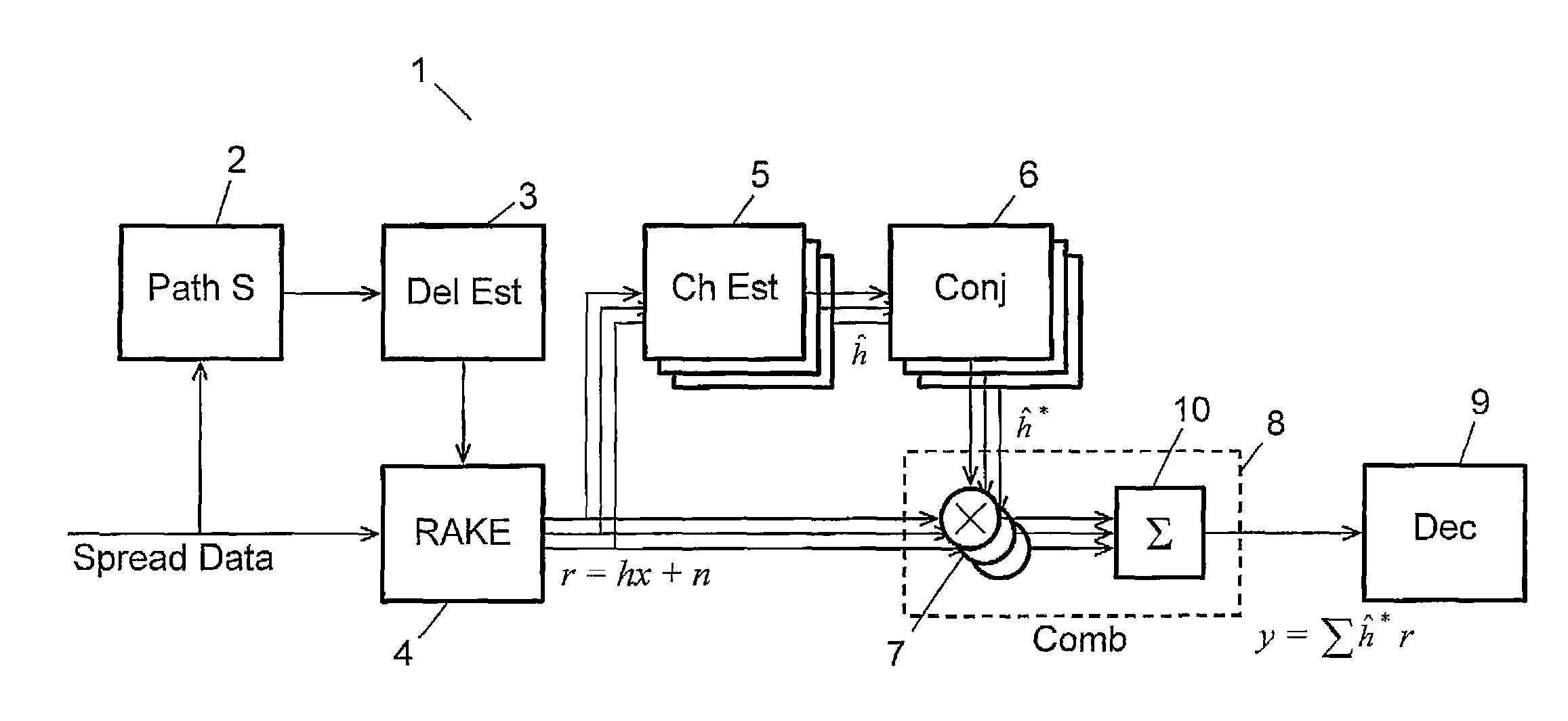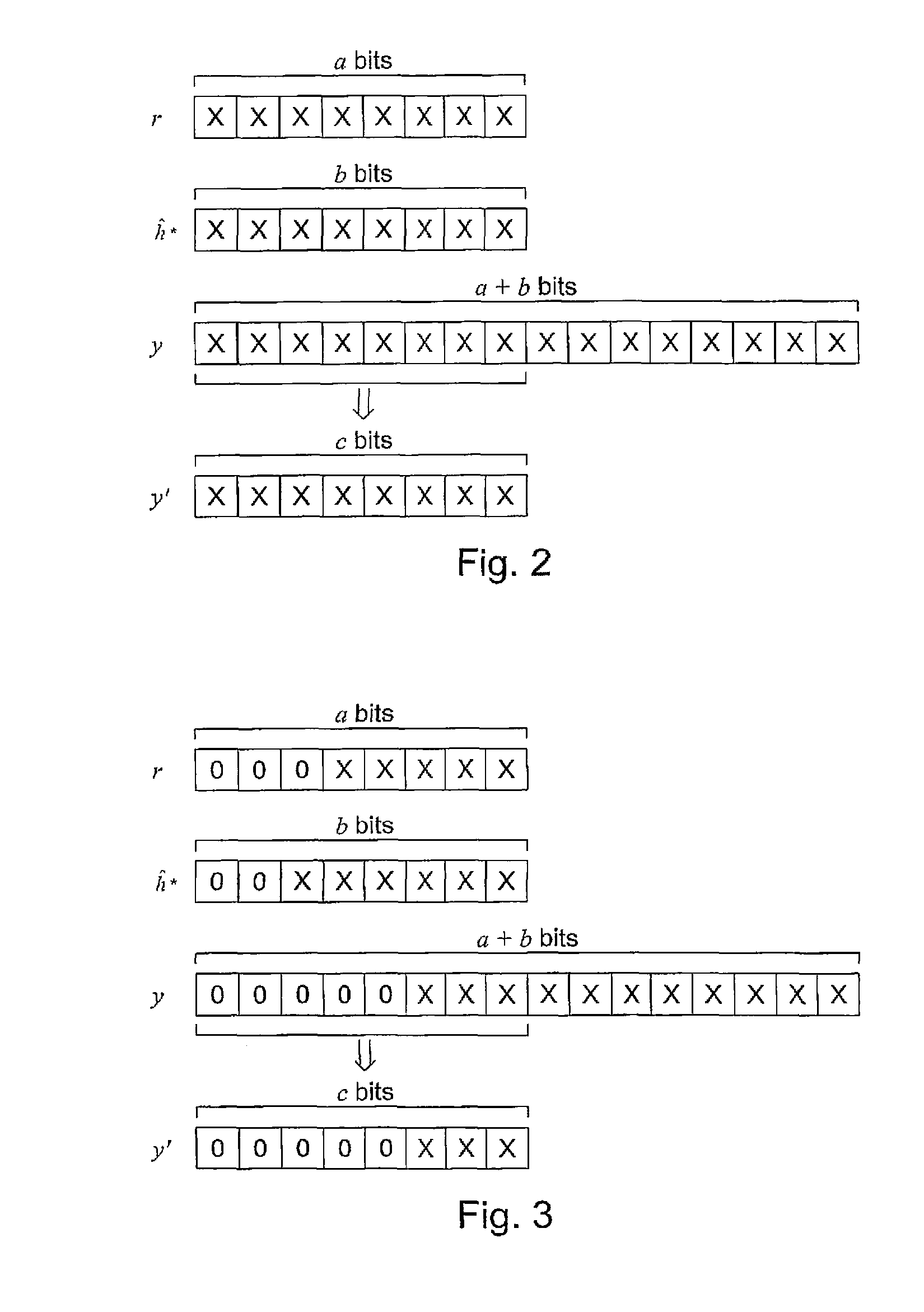Scaling in a receiver for coded digital data symbols
a digital data and receiver technology, applied in the field of receiving coded digital data symbols, can solve the problems of limited bit width to represent data values in the terminal, limited bit width available for the processing of this estimate, and limited computational resources of terminals for use with such communications networks
- Summary
- Abstract
- Description
- Claims
- Application Information
AI Technical Summary
Benefits of technology
Problems solved by technology
Method used
Image
Examples
Embodiment Construction
s="d_n">[0032]FIG. 2 shows how an estimate having 16 bits may be truncated so that the eight most significant bits remain,
[0033]FIG. 3 shows the situation of FIG. 2, when the estimate has a number of leading zeros,
[0034]FIG. 4 shows a situation in which the leading zeros are not included in the selected bits,
[0035]FIG. 5 shows how the estimate may be multiplied by a scaling factor before truncation,
[0036]FIG. 6 shows a different way in which the estimate may be multiplied by a scaling factor before truncation,
[0037]FIG. 7 shows a part of the circuit of FIG. 1 with a scaling unit and a truncation unit added,
[0038]FIG. 8 shows an embodiment of the invention in which the symbol estimates are scaled,
[0039]FIG. 9 shows an embodiment of the invention in which multiplication results are scaled,
[0040]FIG. 10 shows an embodiment of the invention in which the channel estimate is scaled, and
[0041]FIG. 11 shows a different embodiment in which the channel estimate is scaled.
DETAILED DESCRIPTION ...
PUM
 Login to View More
Login to View More Abstract
Description
Claims
Application Information
 Login to View More
Login to View More - R&D
- Intellectual Property
- Life Sciences
- Materials
- Tech Scout
- Unparalleled Data Quality
- Higher Quality Content
- 60% Fewer Hallucinations
Browse by: Latest US Patents, China's latest patents, Technical Efficacy Thesaurus, Application Domain, Technology Topic, Popular Technical Reports.
© 2025 PatSnap. All rights reserved.Legal|Privacy policy|Modern Slavery Act Transparency Statement|Sitemap|About US| Contact US: help@patsnap.com



